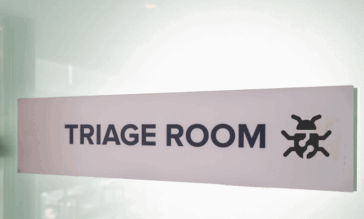The Macros Playbook: Maximizing Benefits, Minimizing Risks

Macros have become essential in business for automating tasks, improving accuracy, and customizing solutions, driving notable efficiency and process standardization. Yet, they come with significant risks, as approximately 87% of ransomware on the Dark Web leverages macros for device infection. Cybercriminals often use macros in seemingly benign documents to deploy ransomware.
While macros offer considerable benefits without additional security, their benefits do not balance the risk of using them. In this article, we explore the challenges of macro security and investigate how to secure them.
What is a Macro?
Macros are a sequence of commands or actions compiled into a single script that automates repetitive tasks across various software products. This functionality streamlines workflows, enhances productivity, and reduces the potential for human error across multiple applications.
Macros automate routine document and data processing tasks in programs like Word and Excel, covering everything from formatting text to performing complex calculations. In these environments, macros can be created by recording user actions or writing scripts in a programming language like VBA (Visual Basic for Applications).
Macros in Software Development
Macros take on a slightly different role in software development, often used to automate coding processes. They can expedite coding by inserting predefined blocks of code, thus saving developers time and ensuring consistency in coding standards. Macros in this context might be integrated within an Integrated Development Environment (IDE) to speed up software development cycles.
Macros in Design
In digital graphics and design, macros are invaluable for automating repetitive tasks. They automate time-intensive tasks like applying filters, resizing images, or batch-processing, crucial in software like Adobe Photoshop or Illustrator, where precision and speed are essential. This automation saves hours of manual work, allowing for quicker project turnarounds, and liberates designers to focus more on creative exploration and innovation. By handling the repetitive aspects of design, macros enable designers to delve deeper into creative experimentation, leading to more inspired and inventive design outcomes.
Macros in Gaming
Macros have a unique role in gaming, often used to automate complex sequences of actions or keystrokes. This automation enhances gameplay and provides an advantage in repetitive or skill-intensive scenarios. They are well accepted for casual play, but macros may be considered unfair or against the rules in competitive gaming environments.
What are the Security Risks of Macros?
While highly beneficial, macros come with inherent security risks. A primary concern is macro-based malware, a type of malicious software that leverages the automatic execution feature of macros. This capability, intended for simplifying tasks, can be exploited by attackers to execute harmful code without the user’s knowledge.
Risk of Macros in Office
In Microsoft Office products, for instance, macros can run complex VBA scripts. If these scripts are malicious, they can lead to unauthorized data access, theft, or system control. Similarly, malicious macros embedded in development tools can disrupt the coding process in software development environments, leading to compromised software integrity.
Risk of Macros in Design Tools
Graphics software isn’t immune, either. In programs like Adobe Photoshop, attackers can manipulate macros to execute harmful actions, ranging from corrupting design files to gaining unauthorized access to sensitive project data.
Risk of Macros in Emails
Attackers have several ways to deliver malicious macros. They are frequently included in phishing emails that appear legitimate and contain attachments or links that, once clicked, activate the malicious macro. Another method is through compromised attachments, where seemingly innocuous files execute the embedded macro malware when opened.
How Can We Protect Ourselves from Dangerous Macros?
Safely utilizing macros requires a blend of vigilance and understanding of security practices.
Safe Practices for Using Macros
- Disable Macros by Default: One of the fundamental steps in ensuring safety is to disable macros by default across all applications. This means macros will not run automatically, allowing one to assess their source and intent before execution. However, this can severely hinder user productivity and sometimes render documents useless.
- Enable Macros from Trusted Sources Only: Macros, particularly in sensitive environments like software development or graphic design tools, only enable macros from known, trusted sources. This reduces the risk of inadvertently running malicious code.
- Sanitize Documents: Safely opening documents does not require eliminating macros. Technologies such as Content Disarm and Reconstruction (CDR) rebuild files from known-good components. Advanced CDR (a Votiro staple) can remove dangerous macro functions while preserving their functionality.
- Regularly Update Software: Macros often exploit known vulnerabilities, so keeping software updated ensures you have the latest security patches and features to help protect against macro-based threats.
- Educate and Train Users: Educating team members about the risks associated with macros and how to identify suspicious ones is crucial. Awareness can prevent many threats that rely on user naivety.
Security Features and Settings in Microsoft Office
Microsoft Office products come equipped with specific security measures to guard against macro-based threats:
- Protected View: When opening files from the internet or potentially unsafe locations, Microsoft Office uses Protected View. This mode allows users to read a file without enabling macros, reducing the risk of automatic malware execution. Again, however, Protected View acts as a temporary measure. Files that rely on macros and those being shared beyond the Microsoft environment will once again be prone to exploit.
- Trusted Locations and Documents: Users can designate specific locations on their device as ‘trusted,’ meaning that macros from files in these locations will be allowed to run. Users should ensure that only completely secure locations are marked as trusted.
- Security Alerts and Warnings: Office applications provide alerts about macros’ presence and potential risks. Paying heed to these warnings and not disabling them can serve as a frontline defense.
How Votiro Makes Macros Safe
Through a multifaceted, yet streamlined strategy, Votiro presents a powerful defense mechanism against concealed malicious code in files, including macros. This approach encompasses detection, protection, and analysis, effectively combining the functionalities of Antivirus (AV), CDR, and retrospective analysis into a singular, integrated solution. This blend offers robust security against overt cyber threats and is adept at countering more insidious and hidden dangers.
Votiro stands out by prioritizing seamless integration with pre-existing security frameworks. The philosophy here isn’t about replacing but augmenting current systems, a task at which Votiro shines, thanks to its API-centric design, allowing it to integrate smoothly into the existing business infrastructure. Such harmonization offers instant protection against concealed malware threats, enabling organizations to use their crucial tech solutions without disruption.
Learn how Votiro can safeguard your files, allowing you to get all the benefits of macros and the peace of mind to know they are safe. And if you’re ready to try Votiro, start today with a free 30-day trial.
News you can use
Stay up-to-date on the latest industry news and get all the insights you need to navigate the cybersecurity world like a pro. It's as easy as using that form to the right. No catch. Just click, fill, subscribe, and sit back as the information comes to you.
Sign-up Here!
Subscribe to our newsletter for real-time insights about the cybersecurity industry.



